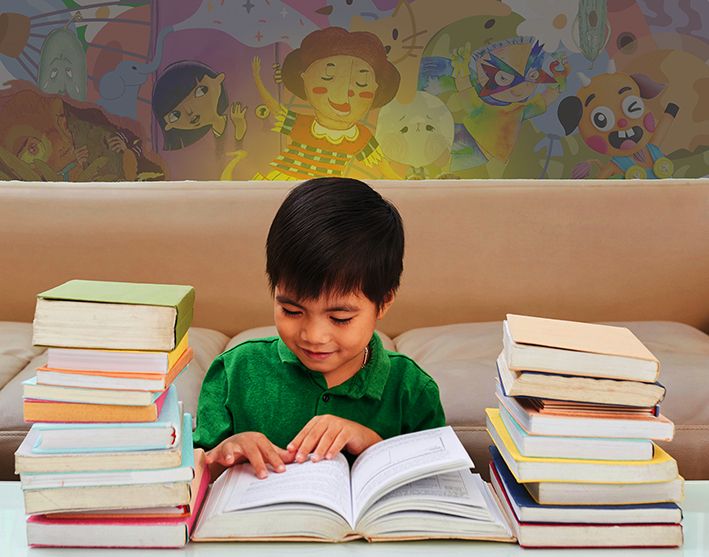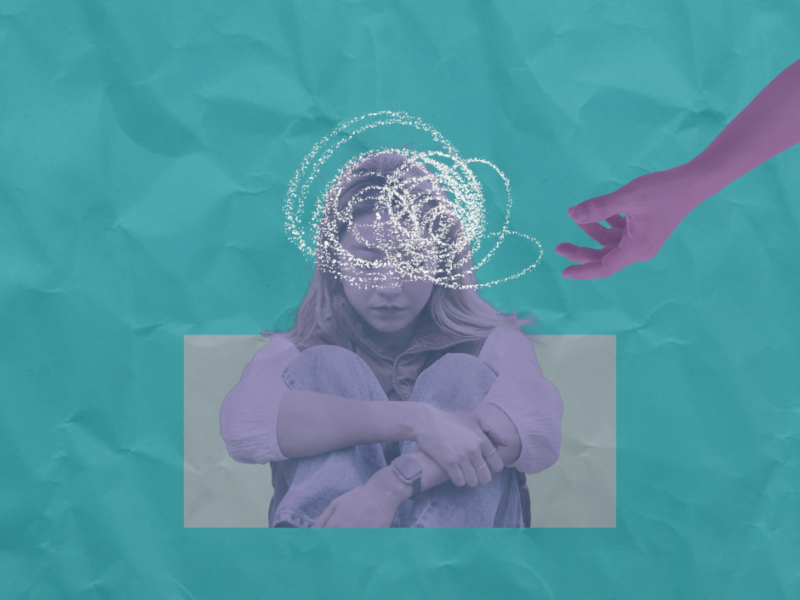Augie Rivera, Michellan Sarile-Alagao and Dr. Jenny Albinio talk about the challenges and the rewards of making stories for a much younger audience.
Children’s books often determine not just if a kid turns out literate but how critically he can eventually use that literacy.
No doubt it’s the diversity and types of books children are exposed to that shape the way they’ll eventually view the world. And their influences can have such long-lasting effects.
One of my earliest memories about conflict resolution was in Renato Gamos’s “Tiktaktok at Pikpakbum.” A book about two brother dogs who simply fight over the smallest things. But they have a huge realization when one dog saves his brother from real danger. Folks come together when a threat to both their lives is at hand, was what I took away from it.
As I grew older, like millions of other Pinoy Gen X kids in the 1990s, I got a hold of the popular “Funny Komiks.” It was on “Planet Opdi Eyps” comics strip where I first learned about servile cowardice and how “snitches get stitches.” The strip was about a court of royal monkeys (now obviously derived from the “Planet of the Apes” mythos) that hash out every day bureaucracy and governance to hilarious and aptly local “only in the Ph” results.
Looking back, I realize that “Planet Opdi Eyps” did have more adult themes that I wasn’t aware of back then, something that combined political satire with the drollery of monkey business.
A love for stories will imbue them with not only more tolerance for other points of view but ultimately better communication skills and a good base for later cognitive as well as emotional growth. Fact is, the sooner kids begin reading, the better their relationship with stories and words will eventually be.
Arguably then, children’s literature authors are at one of the forefronts of human development. Reading is their tool of influence over the youngest minds
“[Children’s literature is] where kids fall in love with books. I want to meet them right there at that magical entry point. I want to write that book,” wrote British Indian children’s writer and former lawyer Rashmi Sirdeshpande in her essay “Why I write for children.”
But what’s the motivation in writing for children and just how hard is it? At least three people know the answers.
First is MICHELLAN SARILE-ALAGAO, the author of two bilingual picture books for kids, including her latest title “The Trembling Tarsier” under OMF Literature. Then there’s icon AUGIE RIVERA, a veteran who casts a long shadow in Filipino children’s lit with 24 children’s books, including the original folktale, “Alamat ng Ampalaya.” In 2020, he was feted with the Gawad Pambansang Alagad ni Balagtas para sa Panitikang Pambata. A new edition of his book “Burnay, ang Batang Palayok” has just been reissued. There’s also DR JENNY ALBINIO, a Pediatric Junior Consultant in Iloilo City, and the author of three books, including her debut picture book “Diwata and the Dinagyang Festival” released by 8Letters.
Children’s stories tend to seem simple on the surface. But the process behind it as well as its impact is far from being child’s play.
***
KARL R. DE MESA: What motivates you to create in this field? Why write for children?
MICHELLAN SARILE-ALAGAO: The short answer: I love children’s literature and writing for kids. The long answer: As a writer, mom, and mental health and child rights advocate, it was a natural progression for me to end up writing for children, specifically about mental health, which my two books focus on.
AUGIE RIVERA: I write for children because I have a story to tell, and I have something to say. Writing for children allows me to express myself and push messages that I want to share with the readers.
DR. JENNY ALBINIO: I think children are truly the “hope” of humanity. As a healer for tiny humans, every time I see kids smile or laugh, sunbeams appear and the dark clouds vanish. Childhood is a magical stage where perceptions are not yet tainted. If we want change, this is the best stage to mold and hone them into adults equipped to change the world into a better place.
KDM: Many first-timers in children’s lit discover early on that writing for kids surprisingly isn’t that easy. What is the most difficult part in creating for this demographic versus writing for adults?
RIVERA: I first fell in love with children’s literature when I worked as writer [eventually Head Writer] for the groundbreaking Filipino children’s preschool show, “Batibot” in 1992. [I got recruited then by my playwriting professor at that time:] the late great Rene O. Villanueva. At that time, there were no children’s lit or writing for children’s TV classes. [But then I realized I grew up watching Sesame Street] and I was able to watch a few “Batibot” episodes [in the] late 80s, [so I thought it would be easy. But when I was already doing it, I realized it wasn’t.] I had to learn everything, on the job. And I really learned a lot. I had the best mentors and colleagues, got exposed to a lot of children’s programs from all over the world, fell in love with the genre, had fun exploring its possibilities, and gained a newfound respect for children as an audience.
For me, research plays the most difficult and important part of my “pre-prod” or preparation before writing. [It’s difficult to write stories for children. Don’t believe those who say that it’s easy or that you can write that in a few hours] or “oh, the story wrote itself!” [That’s arrogance.] When I write for adults [which is mostly for my TV programs,] I think of the general audience. But when I write for children, I have to know first: who is my target audience? Am I writing this for preschool? School age? High school? Etc. In this way, [you can tailor-fit the] story for them.
ALBINIO: For me, writing for kids is the more daunting task. As an adult author, I need to see the world through the eyes of my target age group, and try to recapture the feelings and perspectives I had at that stage of life. This is essential to ensure the stories I create will truly resonate with my young readers, and that they find comfort, inspiration, and valuable lessons within the pages. It requires a level of empathy, imagination, and a willingness to set aside my own adult biases and preconceptions.
SARILE-ALAGAO: The most difficult thing about writing for kids is that the adults have the money. They choose what books to buy and the books they like aren’t always those that resonate with kids. There are a lot of children’s books out there that are beautiful and well-written but I feel aren’t really written for kids. When I write for children, I try to think about what I liked reading as a child, and what my kids and students like. What do kids find “sticky”—words they find funny or memorable, characters and situations they can relate to, stories that stay with them, those sorts of things.
Childhood and formative experiences, we all have them. But when writing for kids who now have very different pop entertainment, rich tech tools, and cultural references, how do you bridge that generation gap and create registers where kids now can still find a commonality?
SARILE-ALAGAO: I’m really just writing the books that I wish I could have read as a kid. For one thing, I didn’t have any picture books in Filipino as a little kid, which I feel bad about, so both of my children’s books are bilingual—English with Filipino translations. I grew up in a family and household that faced a lot of challenges and had family members with mental health issues, which affected me as well. I was too young to understand all of this and felt fear, sadness, anxiety, and other negative emotions but didn’t know how to cope or ask for help. Even if I did, I’m not sure if the adults around me at that time knew what to do or how to reassure me. I wish I had books that tackled mental health in a way I could understand and brought comfort, so I wrote “The Sad Cat” [which shows kids different ways of coping with sadness and the importance of community] and “The Trembling Tarsier” [which introduces a simple grounding technique that kids can do and encourages kids and adults to face anxiety with care and mindfulness.]
RIVERA: It’s always a new challenge for me. For a time, I was “typecast” as the one who does the “serious” and “sensitive” themes, but I have no qualms about that. Whether we like it or not, some children do live under difficult circumstances and we need to hear their stories, too, and represent their experiences in the content that we produce for children.
Of course, [research was more taxing when I was starting out,] when writing about topics that you’re not very familiar with or seldom discussed. When I did my research for “Ang Lihim ni Lea,” [about incest and child sexual abuse,] I was advised not to interview kids who are victims of abuse as only a trained psychologist can do that. I was invited by my child psychologist-consultant to observe a therapy session through a two-way mirror but I didn’t get a chance to do that. For “Isang Harding Papel” [about a kid during Martial Law,] I was able to interview a cousin who grew up visiting her political detainee mother in a military camp, and I also drew inspiration from my own experiences as a Martial Law baby. For “Ang Katawan Ko at Ako” [about consent and body safety,] I wanted something interactive. I also thought of adding a recurring song meant to be sung by the storyteller, and kids can sing-along to. That’s why the chords are also included in the book, [like “Jingle” songhits.]
When we expose children to different experiences that are very far from their own, we broaden their perspective and make them well-rounded individuals, we help them understand and we promote awareness and acceptance. When we do that, we empower and give hope to children who may be experiencing similar situations first-hand, and at the same time, teach empathy to those lucky enough not be in such difficult situations.
KDM: Any specific memory or experience that informed your latest book?
ALBINIO: I was born and raised in Iloilo, but was never allowed to participate in the Dinagyang Festival until I reached college. Even as a child, however, I was fascinated by the infectious merrymaking. I want to share this experience with other young people, to teach them that the festival is more than just revelry—it is a powerful avenue for a community to come together in celebration of their shared heritage and identity. This is why I chose to write a bilingual children’s book, “Diwata and the Dinagyang Festival” in both Hiligaynon and English language.
SARILE-ALAGAO: The first time I remember experiencing anxiety was after seeing something traumatic when I was around six years old and I didn’t know how to handle such a big and negative feeling. I didn’t know that what I felt was called anxiety until years later. Sadly, it’s not an isolated case. I have a lot of close friends who have experienced panic attacks and dealt with anxiety, some starting at a very young age. I wrote “The Trembling Tarsier” with this in mind.
KDM: What are your thoughts on personally having kids or interacting with kids on a regular basis and writing for them?
RIVERA: Having your own child can have some advantages, but it’s not necessary to becoming a children’s writer. I’ve read somewhere that you don’t need to “have children in order to write for them; you just need to have been one, and to remember what it’s like.” [Let me add:] you must also not forget or lose that child-like wonder.
Being childless myself, it was never a problem when I was still starting in this field. I always interacted with my pamangkins. I met our TV kids audience, and was able to observe them, talk to them and learn from them. Sometimes, I even eavesdropped on kids’ conversations in the mall. I watched a lot of TV and film for and about children. I read and studied a lot of children’s books. It was really never a problem. Even the great Rene O. Villanueva used to tell us that he didn’t particularly like children. [He just liked to write for them.] It’s also fascinating that Theodor Seuss Geisel a.ka. Dr. Seuss had this famous quote: “I feel the same about kids as I feel about adults; Some are delightful, some are dreadful. Most writers of kids’ books will tell you all children are wonderful, but they’re not.”
SARILE-ALAGAO: To be honest, and this is just based on my own experiences as a mom and mentor [for young people in the community I teach in,] I think that the entire “generation gap” that people talk about isn’t as wide or scary as we make it out to be. Yes, kids nowadays are very immersed in tech and media, more so than the generations before them, but their fears, concerns, hopes, and passions are the same ones we’ve had. Arguing with a parent, trying to make friends, worrying about school, wanting to play a game instead of going to sleep—we’ve all done that.
ALBINIO: I’m a mother and my work as a pediatric doctor involves plenty of interaction with kids on a daily basis. I could say that it greatly helped me in writing for kids. There’s still a big room for improvement, though. But I believe that a good writer doesn’t need to have kids in order to write an engaging story.
***
AUGIE RIVERA’s recent releases, Kalambing (winner of the 2024 The Severino Reyes Medal for Best Picture Book), Alamat ng Sibuyas, May Sungay ang Hari, Burnay, ang Batang Palayok, and others are available via Shopee, Lazada, Adarna, Lampara and Looking for Juan.
MICHELLAN SARILE-ALAGAO’s The Trembling Tarsier (OMF Literature-Hiyas) is available at all OMF Literature bookshops, their website and online channels, as well as Lazada and Shopee. Follow her on Facebook and Instagram @michalagao
JENNY ALBINIO’S Diwata and the Dinagyang Festival is available on www.8lettersbooks.com.



